This guide will show you how we collect bilberries in Europe in the wild.
We call them blueberries or “moss” berries, so they are sometimes also known as European blueberries.
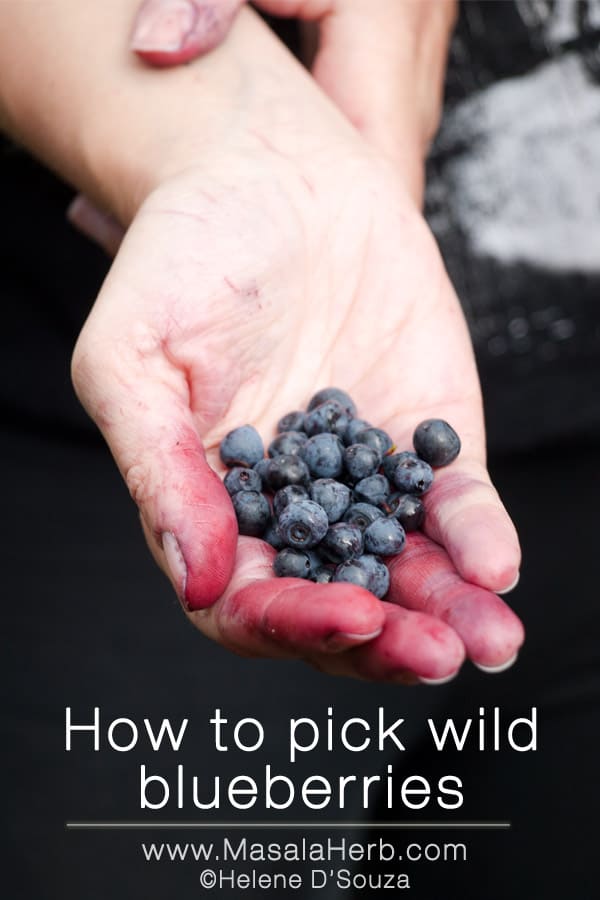

Global Food Recipes
with Spices and Herbs
Free E-Book available for a limited time. Grab yours now and get instantly inspired!
You missed out!
Before we start, just to be clear: Only pick wild berries if you are certain that they are edible!
I will be describing and sharing pictures further down that will help you to get around bilberries.
But if you are uncertain if they are blueberries, then don't pick them because they could be poisonous for the human digestive system.
In doubt also research: How to identify poisonous berries or get a field guide.
Jump to:
- 📕 What are Bilberries?
- 🆚 Bilberry vs Blueberry
- 🗺️ How to find bilberries in the wild?
- 🛍️ Things to get on your bilberry picking trip
- 🌲 Forest Safety Tips
- ⏱ How much can one collect in one hour?
- 🥣 Why should you collect bilberries in the wild?
- 🚿 How to clean bilberries?
- 👁️ You can use bilberries just like blueberries
- 💬 Comments
📕 What are Bilberries?
Bilberries are also known as European blueberries. They are one and the same thing.
They grow in the wild only in the forests between needle and leaf trees.
Bilberry bushes are hardy and can take a beating, so heavy snow in winter and deer populations don't harm them.
Bilberries grow and can be harvested from July to August in the summer months.
The low growing bushes love moss, hence why we call them "Moosbeere" too in Austrian German. The Germans call them Heidelbeere and the French Myrtille.
Tip: Discover more Austrian German to English translations made for travelers.
🆚 Bilberry vs Blueberry
A bilberry is dark purple red on the inside, and they stain! The American Blueberry, on the other hand is white on the inside.
When cooking blueberries, they turn blueish, dark purple, just like the bilberry when cooked. Blueberry jam and bilberry jam look identical when cooked.
Bilberries are smaller in nature than blueberries, yet variations of sizes may exist, but they are never as big as cultivated blueberries.
A single bilberry can be as small as a peppercorn or as big as the width of the cap of a pigmentation liner.
Bilberries only grow in nature in the wild in altitudes above 1600 feet (ca. 488 m) and they need enough rain and sunshine to grow large enough.
They grow in the wild in Europe, such as in alps (France, Switzerland, Austria, Italy, Slovenia, Germany) and Scandinavia (Finland, Sweden, Norway).
We collect them in the Tyrolean alps.
Blueberries, on the other hand, grow on the American continent BUT they started to cultivated them in Europe as well. Yet, American blueberries will never grow in the wild in Europe.
Bilberries taste much more intense than blueberries, but they are also much more sour, if they didn't get enough sun during the growing process.
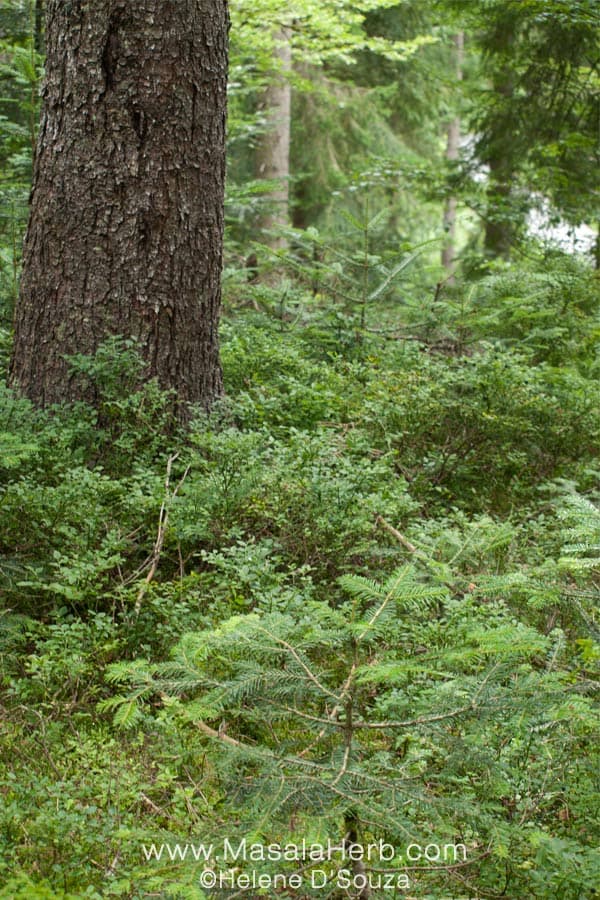
🗺️ How to find bilberries in the wild?
The forests are not too dense, and some sunlight is necessary to help the bilberries to grow. Common trees include a mixture of needle and leaf trees.
A way to find bilberries in the mountain forests is to look out for super green spongy moss.
Bilberry bushes need cold climate forest moss to grow. They go hand in hand.
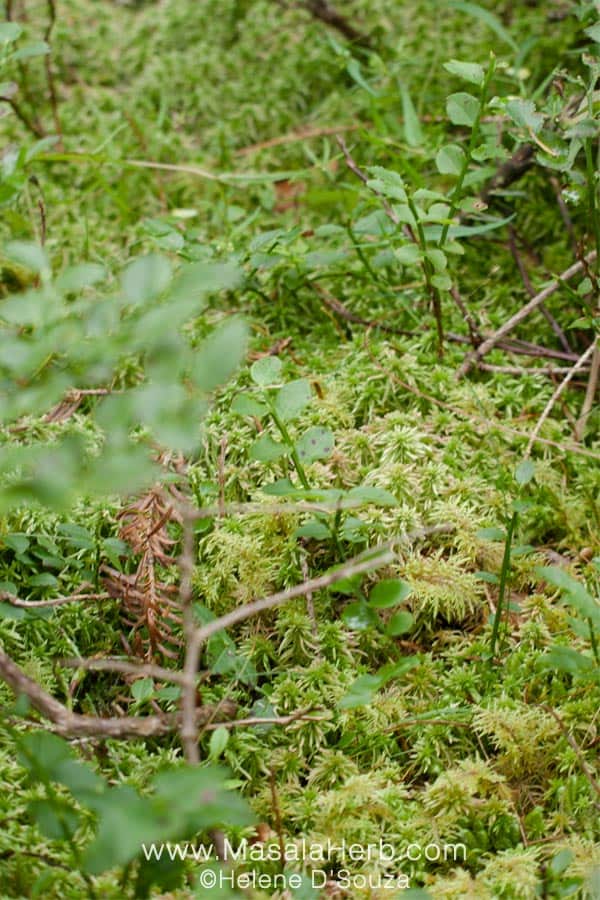
The bilberry (aka European blueberry) bushes hold usually green colored leafs.
We noticed that reddish leafs grow in forest clearings and that the berries tend to grow sweeter at times. A healthier plant typically produces bigger bilberries.
The leafs are rather tiny and round, the bush itself is rather scratchy and quite flexible. You can stamp on it, and it will come back to its original place without looking damaged.
Bilberries hide behind the leafs so the best way to collect and reveal them is to crouch or kneel and hold up the bush.
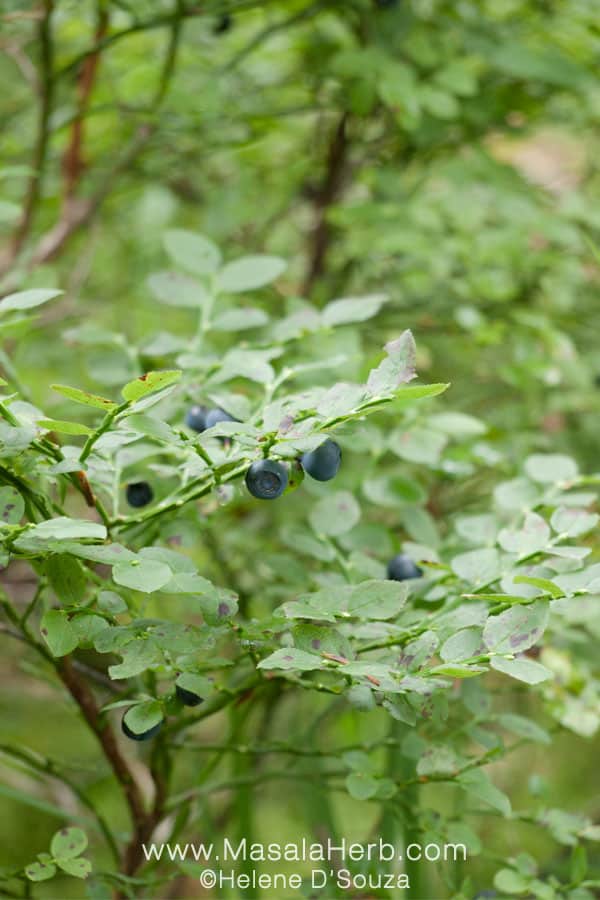
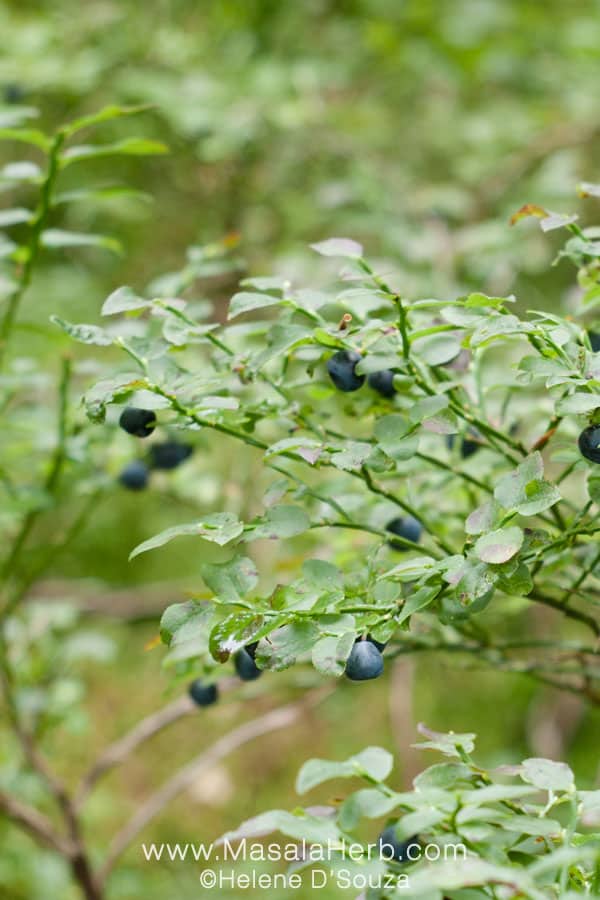
🛍️ Things to get on your bilberry picking trip
- Containers with a lid such as buckets, Tupperware, etc
- long pants and shirt because blueberry bushes can be scratchy
- black clothes or clothes which can get dirty because bilberries stains are hard to remove
- Some bottled water or anything to quench one's thirst
- Natural mosquito repellent. Mosquitoes are not far, and you don't want chemicals to fall on your bilberries.
- A Bilberry comb (as shown in the picture further down) to collect berries easily. Note that some areas do not allow picking bilberries with combs anymore, such as in France.
Also make sure to...
- get a map or compass or something so that you can't get lost in a new forest environment
- keep a phone around in case of emergencies
- get a friend because it's more fun to collect bilberries together
- get a raincoat in case the weather changes quickly
- find lots of spare time to harvest in peace
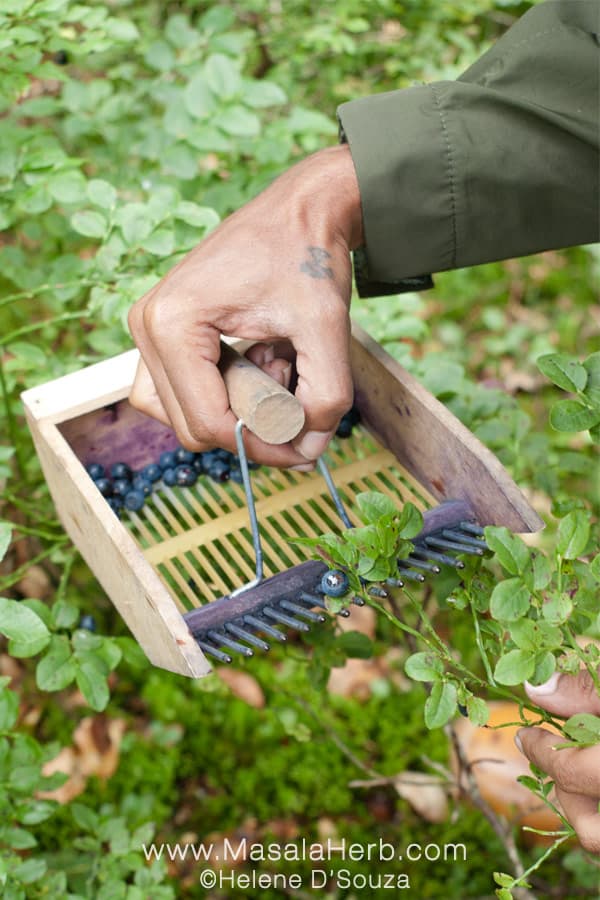
Blueberry combs can be commonly bought in the European alps.
They are not that expensive and super useful because you can collect 4 times more berries in the same time that you would need to pick manually.
I, personally, prefer to pick manually: It's just an old habit.
The blueberry comb doesn't harm the plant, nor does it smash the berries if used gently as shown in the picture above.
Another reason why you should take it easy with the comb is fewer leafs tend to fall together with the berries.
Fewer leafs mean less time wasted picking out leafs when washing the berries.
Moreover, as you could see from the first post picture: Bilberries stain fingers immensely and the comb may rescue your beautiful nails.
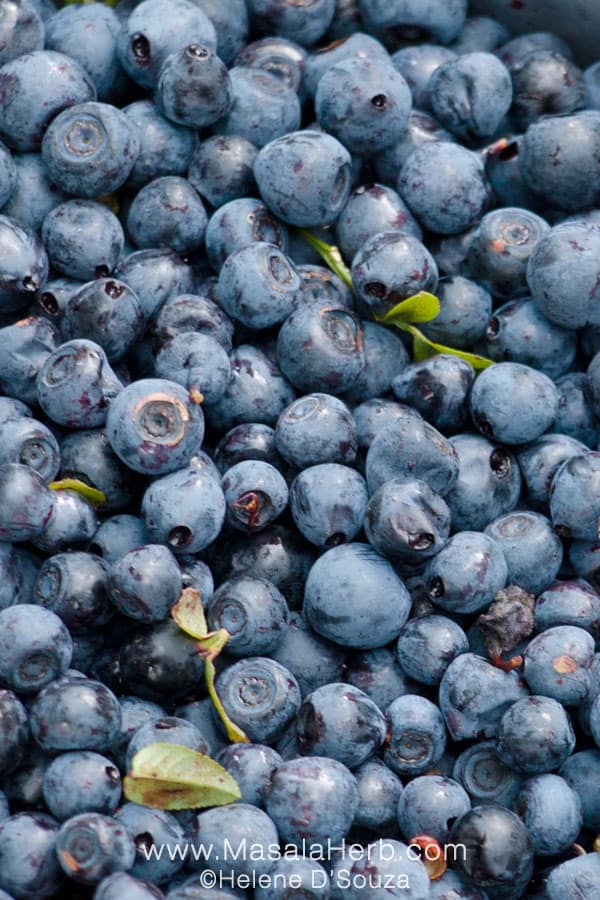
🌲 Forest Safety Tips
I just want to add: The advantage of picking bilberries in the central European alps is that the forests are quite safe.
That means no predators or poisonous creatures.
If a fox, badger or deer ever tries to come close to you, it means that something is wrong with it and that's when you should keep away from the animal.
Don't just touch random mushrooms and berries which you can't identify, they may be poisonous.
Otherwise, I can tell you that nothing will ever harm you in the forests in Europe.
Insects are limited too compared to tropical forests.
⏱ How much can one collect in one hour?
Two people usually take about 1 hour to collect 2.2 pounds (ca. 1 kg).
Now, that's an average, and again it depends on if you found a good spot with plenty of bilberries and if you use a comb too.
My grandmother would take a few hours with her skilled hands, and she would come back with masses!
🥣 Why should you collect bilberries in the wild?
I know it can be a backbreaking experience, but it's worthwhile if you value fresh and organic forest berries.
My husband calls a bilberry bush clearing a paradise on earth, so it does make sense to collect your own if you consider that you don't get them so easily commercially.
Furthermore, bilberries in the European alps can be typically eaten directly from the bush.
Therefore, I prefer to collect bilberries after a good summer shower, but again bilberries in the forests are anyway untreated and dust is rather rare in a forest environment.
Bilberries are known to be high in antioxidants and nutrients, making them amazing super foods!
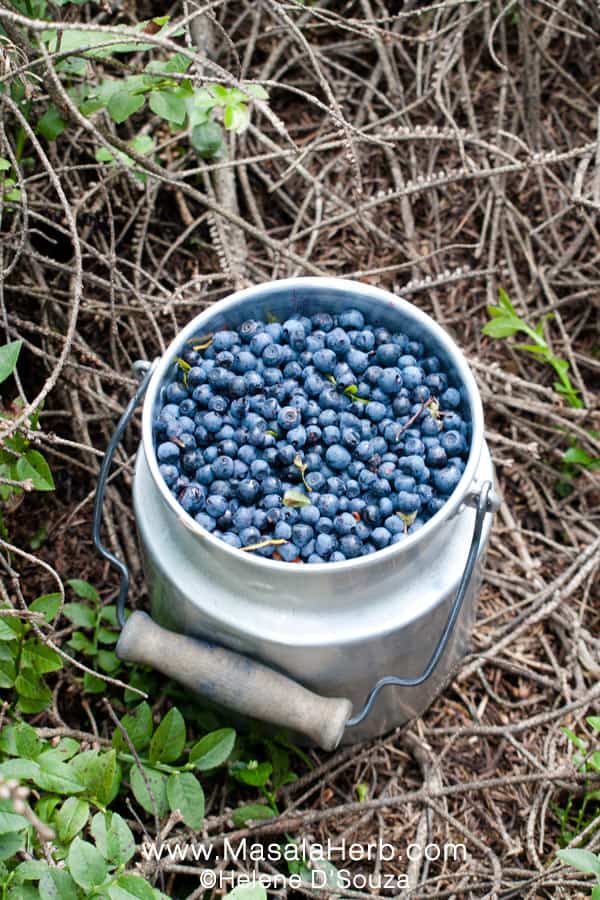
🚿 How to clean bilberries?
Countless leaves and other small dirt tends to get stuck on your bilberries.
The easiest way to clean them is to spread them in a tray outside and blow off the leaves and dirt with a hair dryer.
Once you are done doing this, you will have to take off the small stem.
Rinse your berries in water with a dash of vinegar to get rid of more impurities and of insects if any.
Then you can just use your bilberries directly or place them into the fridge for up to 2 days max until you use them. Don't keep them out any longer or your berries will start to decay.
You can also freeze your bilberries by placing a batch at a time into zip lock bags. They last for months that way.
